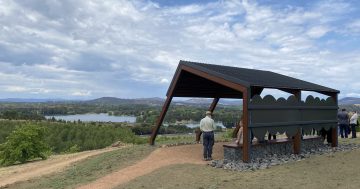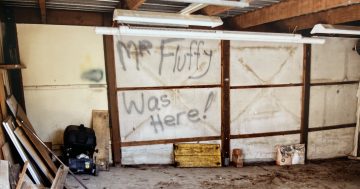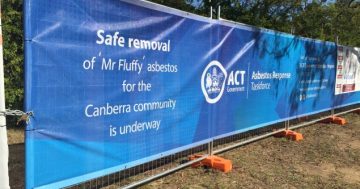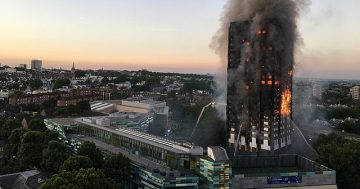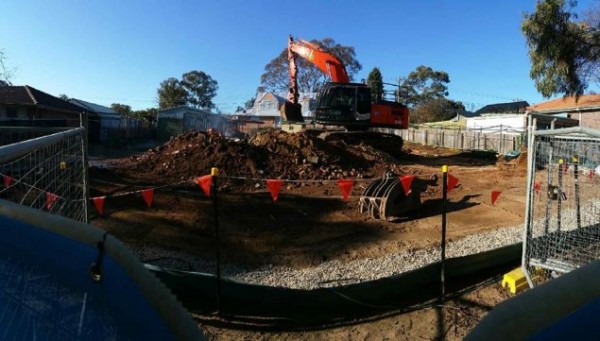
Mr Fluffy demolitions took place across more than 1000 Canberra house sites. File photo.
A thousand front door keys that no longer lead anywhere. A map covered with stickers trailing across Canberra’s suburban outline. Family photos from houses and backyards that are gone forever. They’re all symbols of the human scars left by the Mr Fluffy asbestos contamination, but how do we best record its history and make some sort sense of it all?
As the asbestos eradication program ends, Dr Sue Packer is chairing the Mr Fluffy Community and Expert Reference Group, which is coordinating a community consultation program on the Mr Fluffy legacy. They’re inviting members of the community to share their stories about the saga throughout June.
“It was a massive upheaval for thousands of households and all those associated with them,” Sue says. “The Canberra community needs to learn from the experience, to look into the future with more knowledge, so that people coming afterwards can understand what happened here. Health fears obviously underpin all this, but there is so much other trauma to understand and process.”

Dr Sue Packer is heading the Mr Fluffy Community and Expert Reference Group. Photo: D Jukic.
Dr Packer says that while some Mr Fluffy homeowners remain angry and unresolved about their loss, others have moved on. “There are nice stories about continuity, and about communities re-developing,” she says.
“But more than any other factor, the thing that still rankles for so many people, no matter how they’re coping, is that this stuff was pumped into our houses at a time when there was clear evidence that it was a bad thing to do.
“We certainly now have a much better-informed trade population with regard to asbestos safety. We learned a huge amount about the sensitivity of demolishing a beloved family home, and the people who auctioned those sites knew they were often doing so in the presence of devastated family members.
“There was lots of worthwhile learning for us all as a community in how to deal with trauma. The next step is to work out how we can best remember this experience.”
Many ideas have already been put forward about creating a permanent memorial, from public health scholarships to the huge wall map from the asbestos task force showing all affected properties or perhaps an installation involving all those poignant keys. Dr Packer says it’s likely that the Canberra Museum and Gallery will be involved.
The reference group wants to hear as widely as possible from anyone connected with the Mr Fluffy houses who would like to contribute their stories and ideas for commemorating the events. At the end of the consultation period, there will be a report to the government with recommendations on how to record this part of Canberra’s history.
And while there’s been plenty of criticism over whether the government has made money in the sale process, Dr Packer says it’s important to remember that house site profits have gone into reducing the size of our Commonwealth loan, following the Federal government’s refusal to take responsibility for the events that occurred before self-government.
Dr Packer also points out that without the assistance offered by the ACT government, the Mr Fluffy homeowners would have been left with an entirely unsaleable asset and potentially in dire financial straits.
“Those most affected were conscientious caring people who looked after their families all their lives and never asked for help or assistance. Their best efforts to give their families a secure future were undone by this asbestos. For a group of people, who never thought they’d have to ask for help, it was a shattering learning curve.”
Throughout June, the CERG will host a number of drop-in sessions as well as an online presence. Community members can visit the project website to provide their input through online forums or by completing the online questionnaire.
Community drop-in sessions will be held from 2 pm-4 pm and 5 pm-7 pm on 19 June 2019 at Forrest Hotel, and on 20 June 2019 at The Tradies Dickson.












